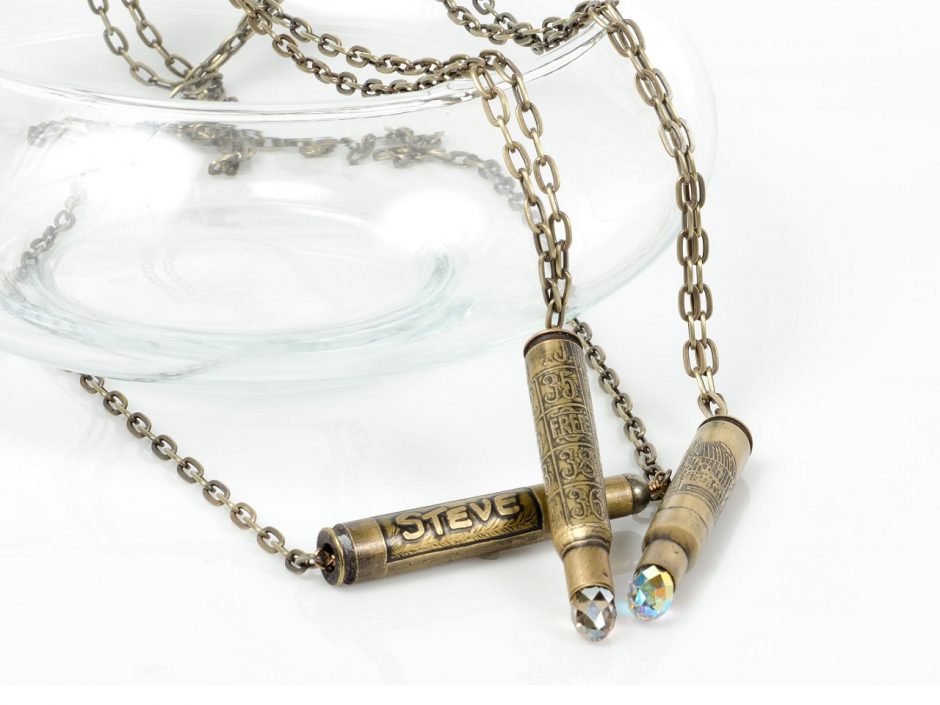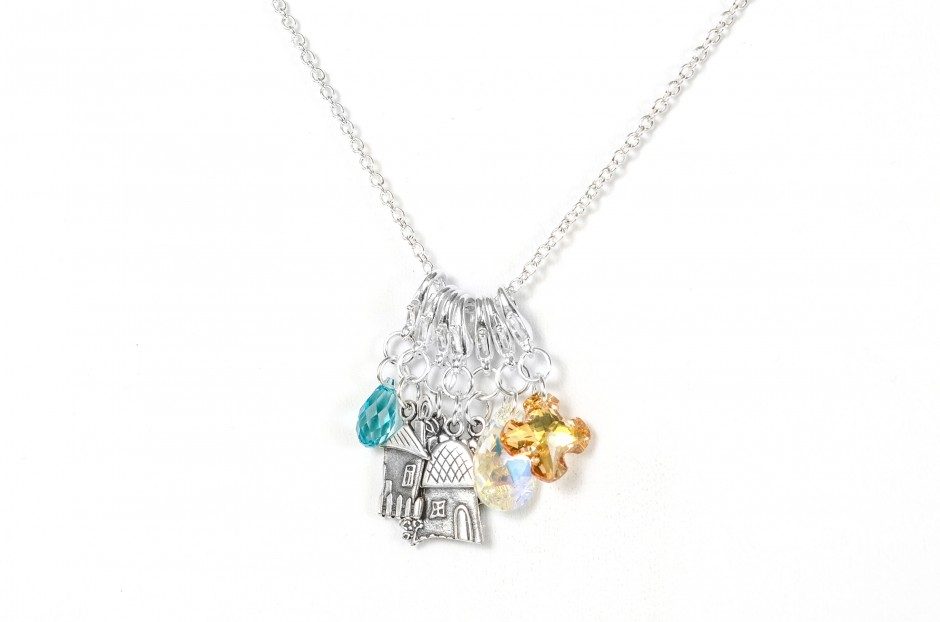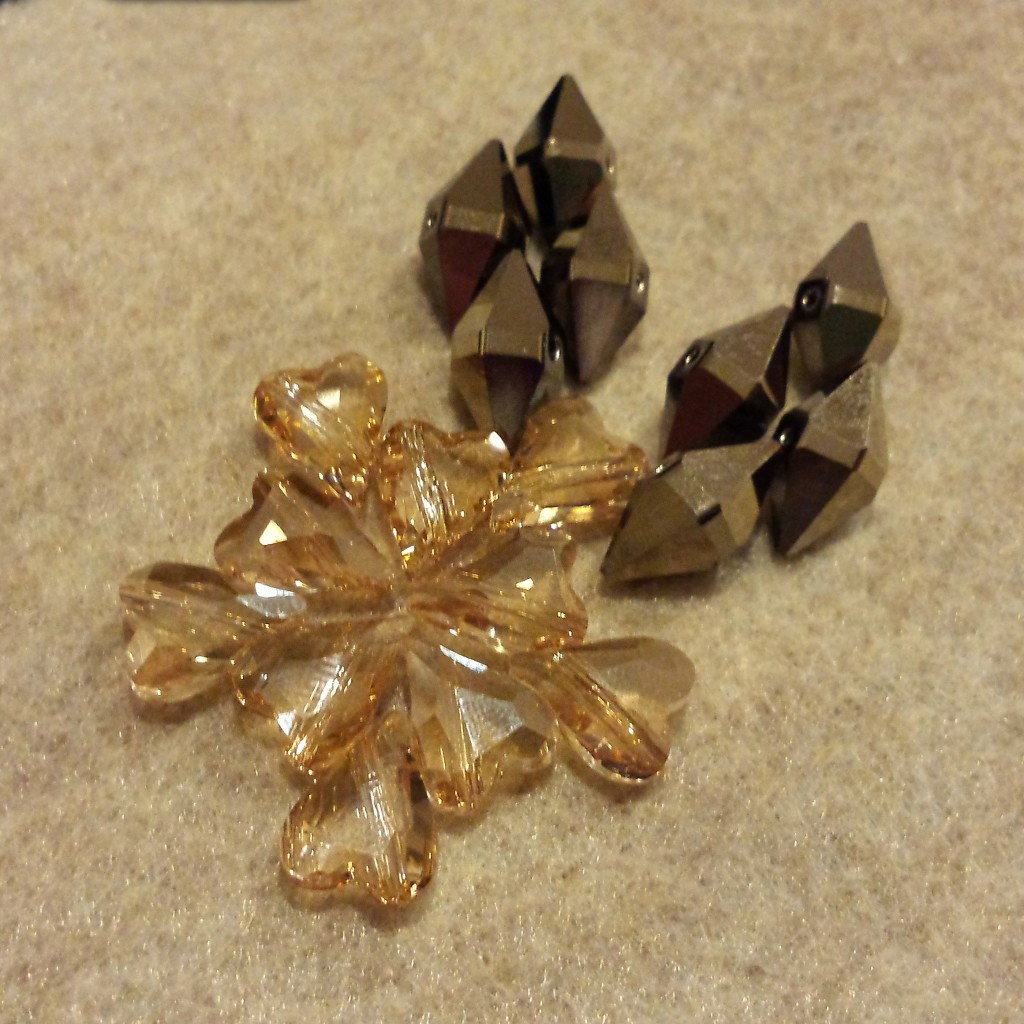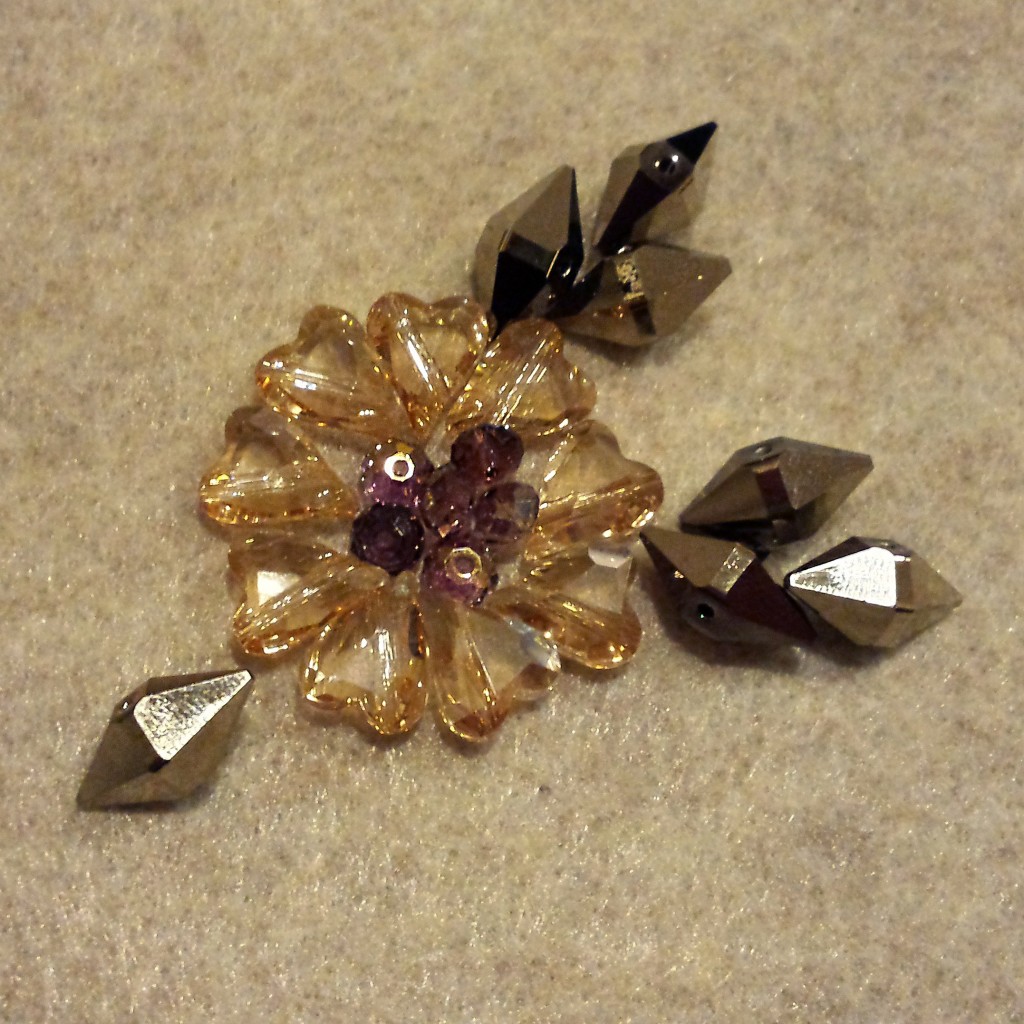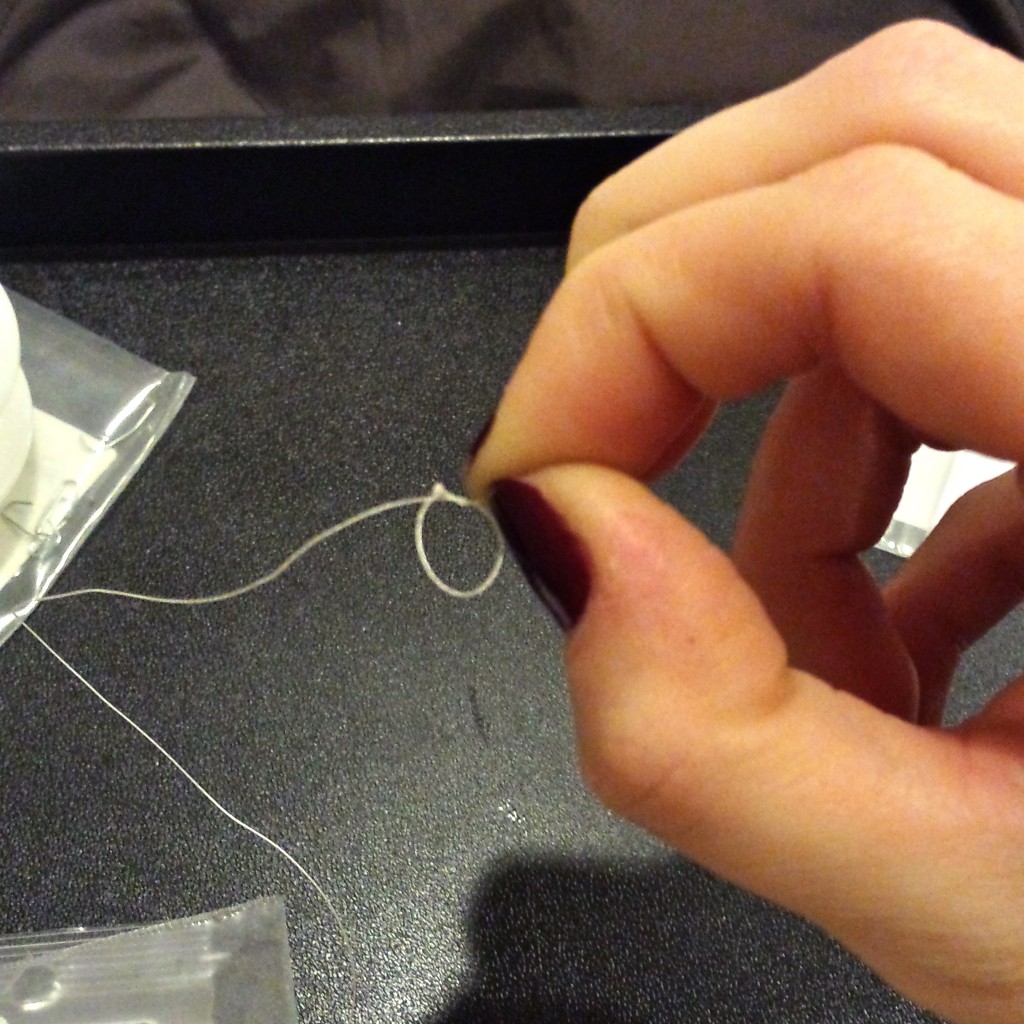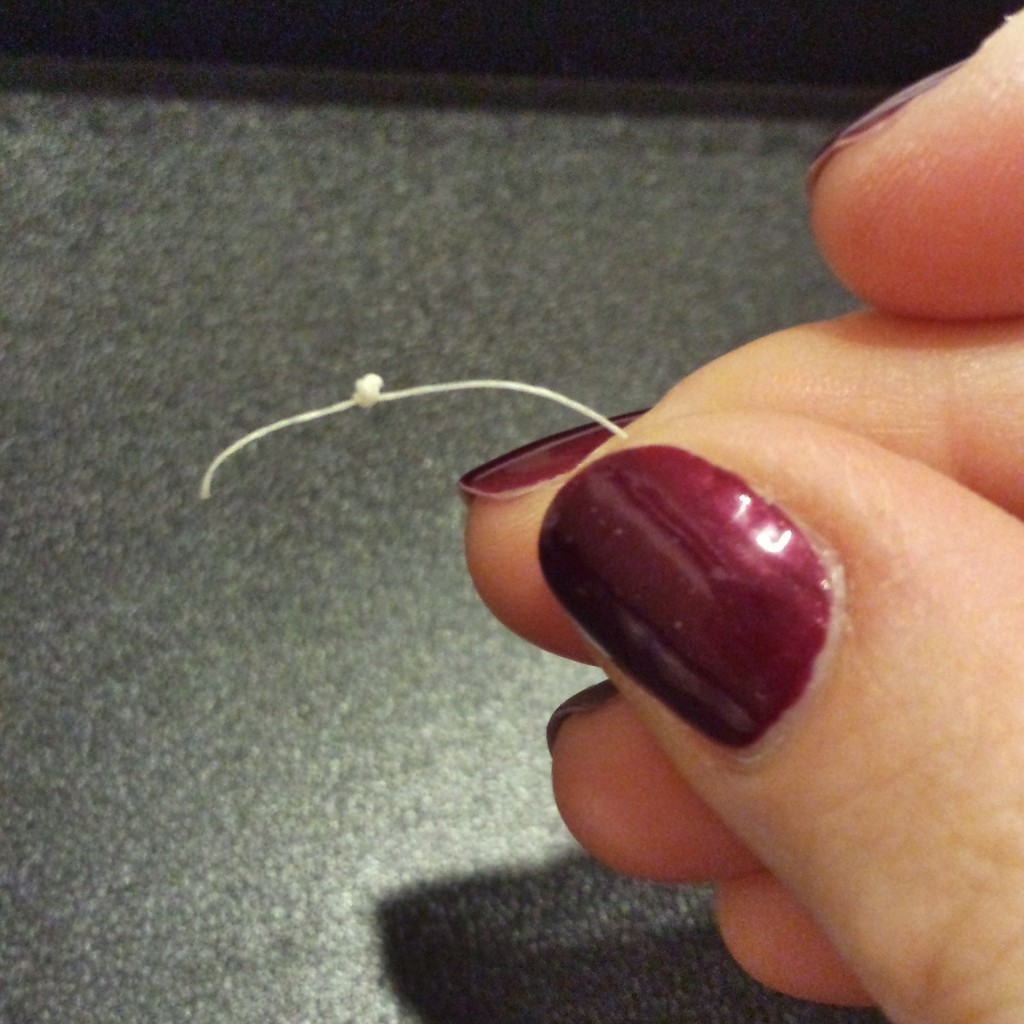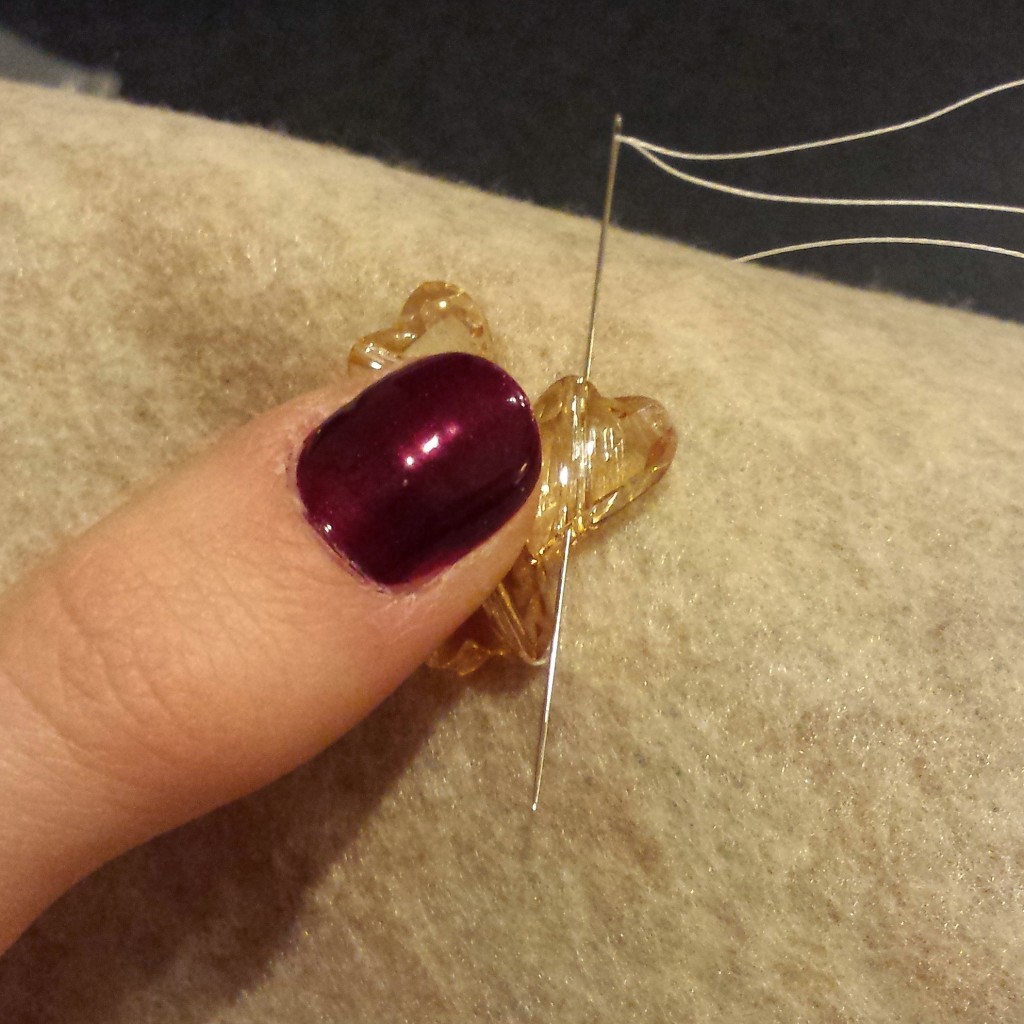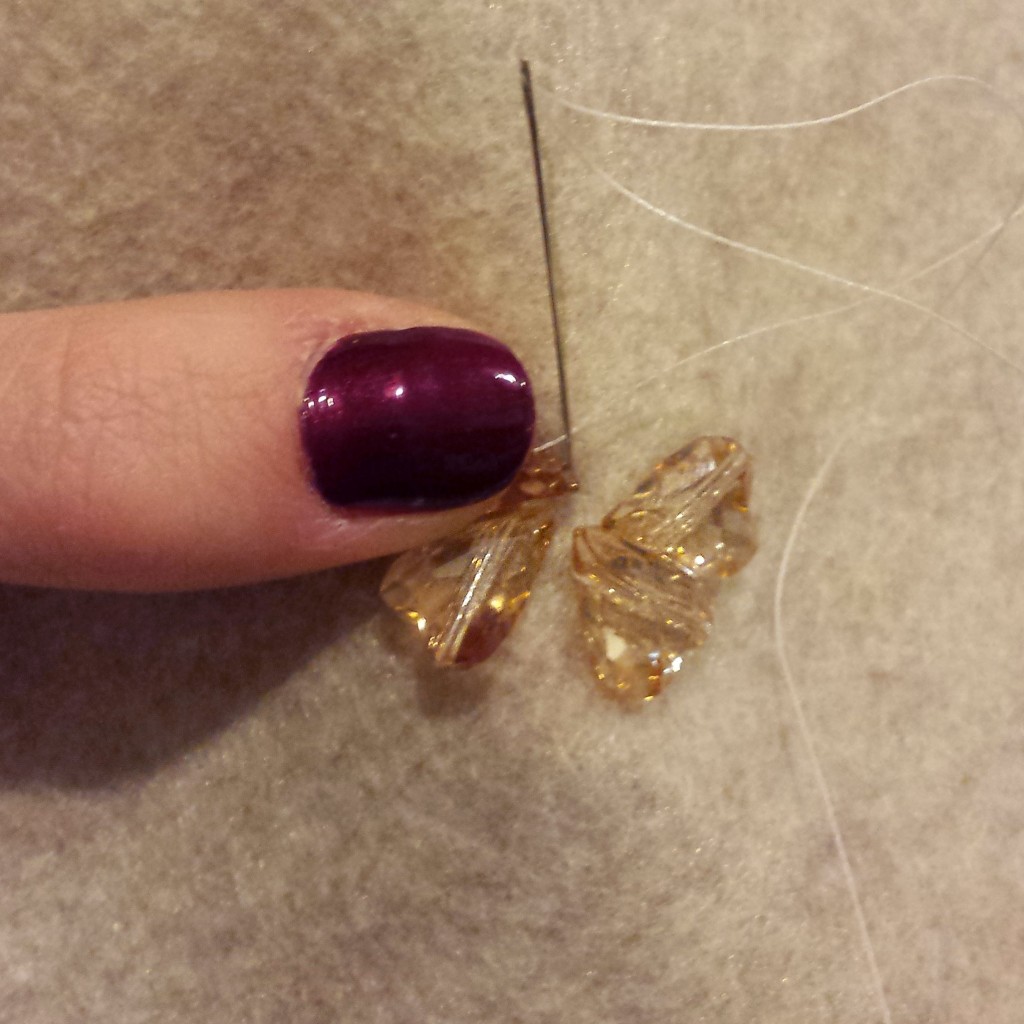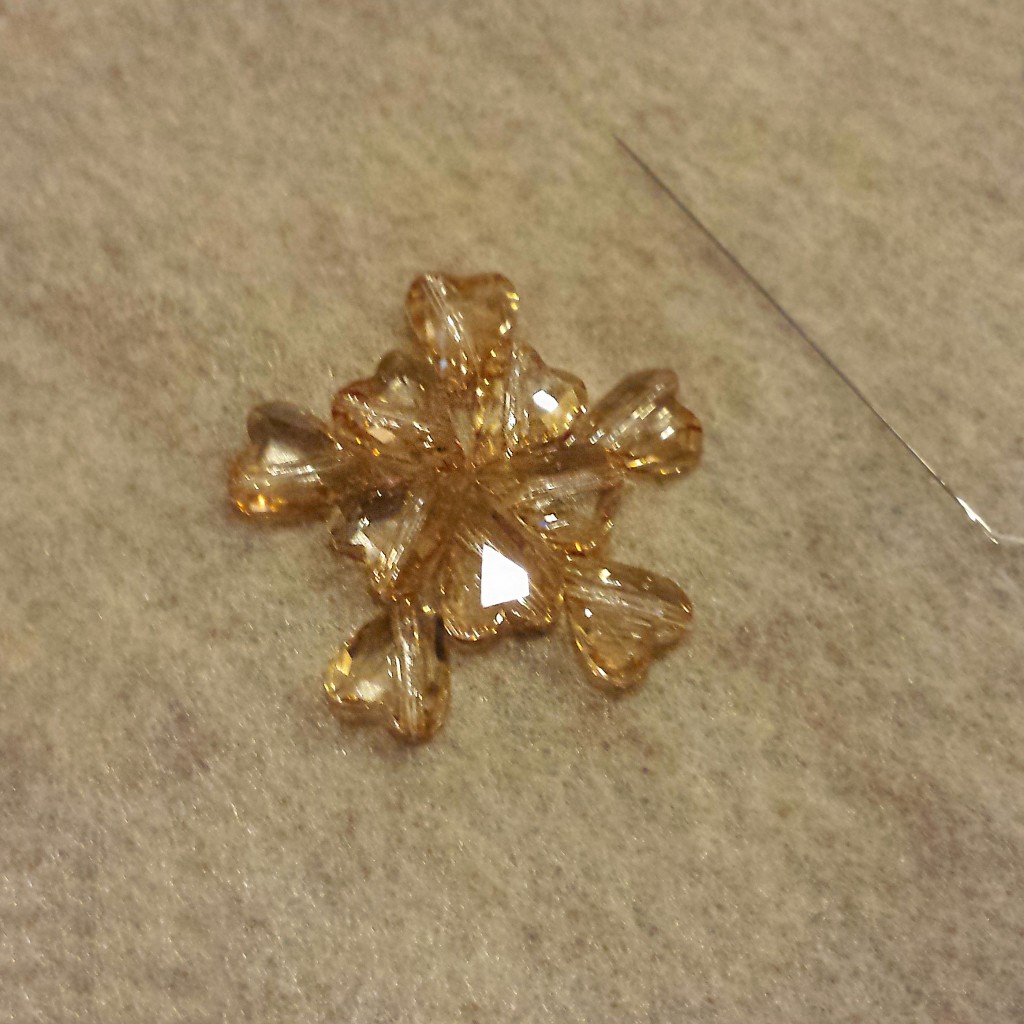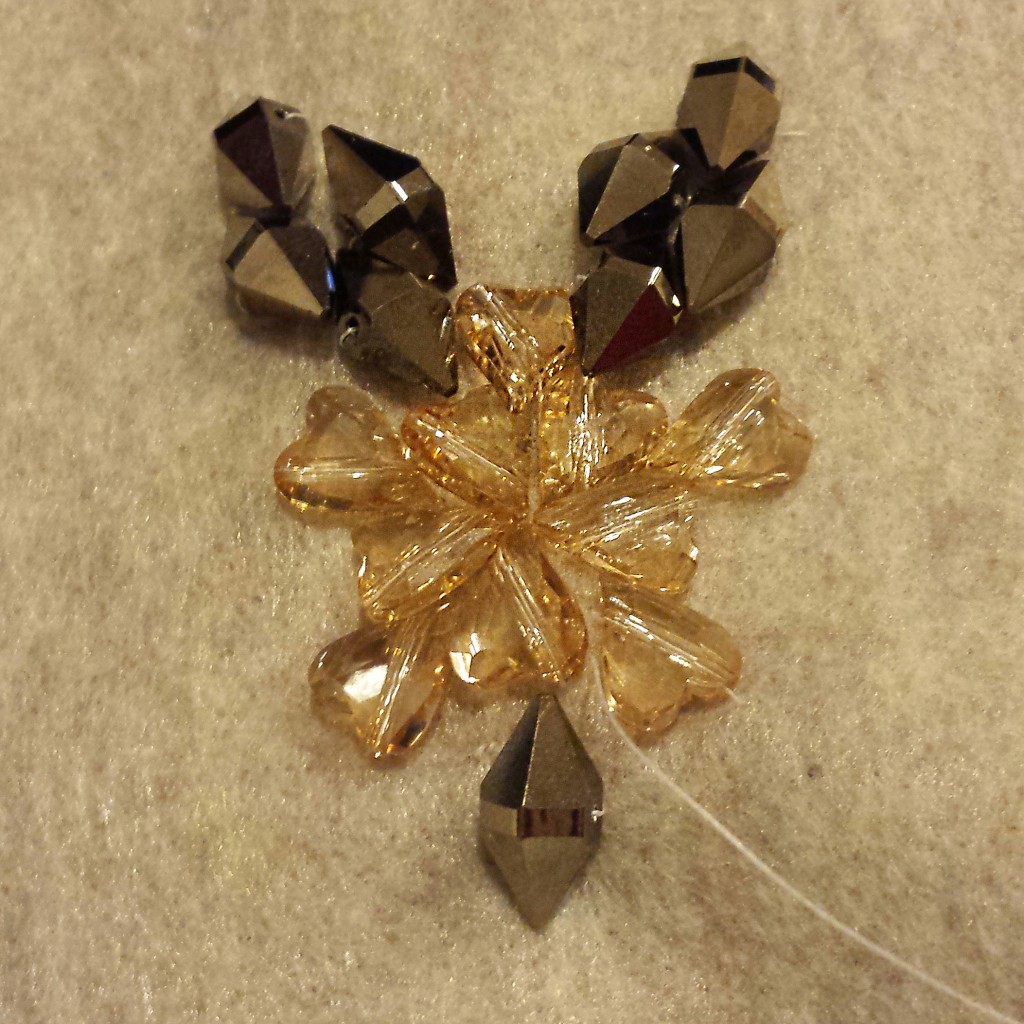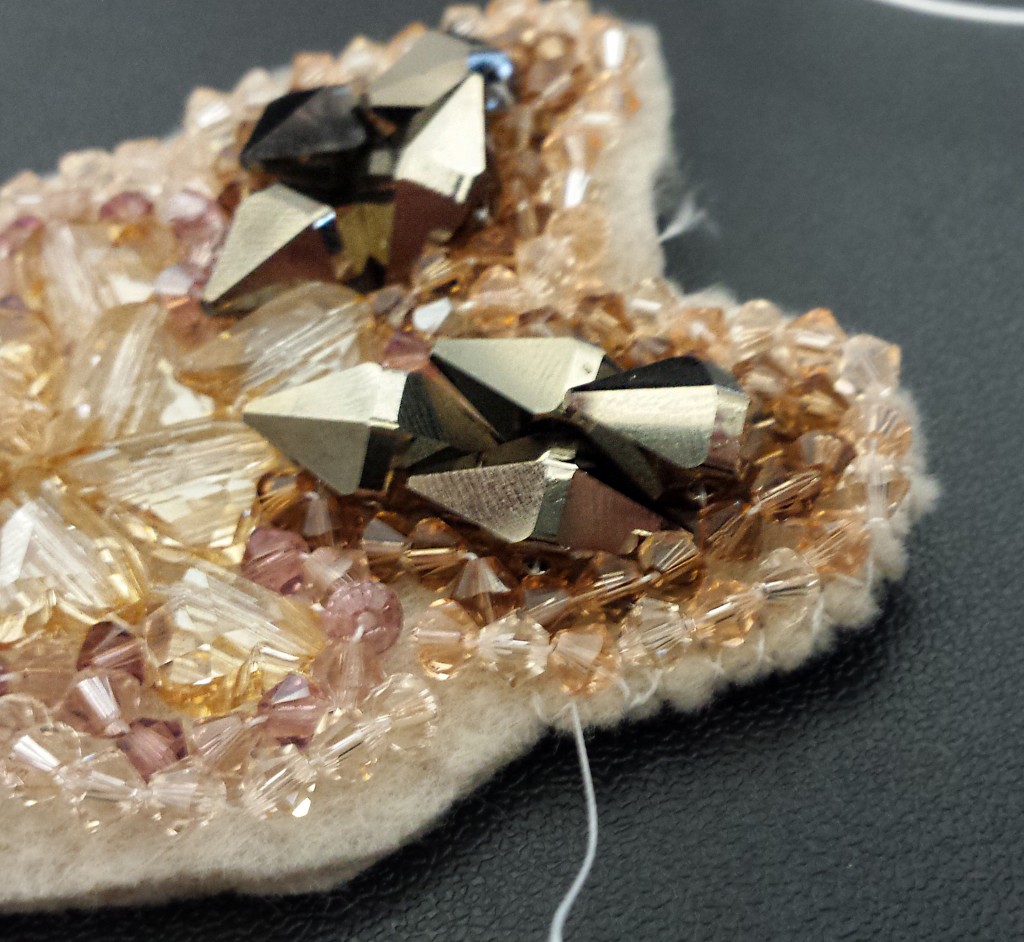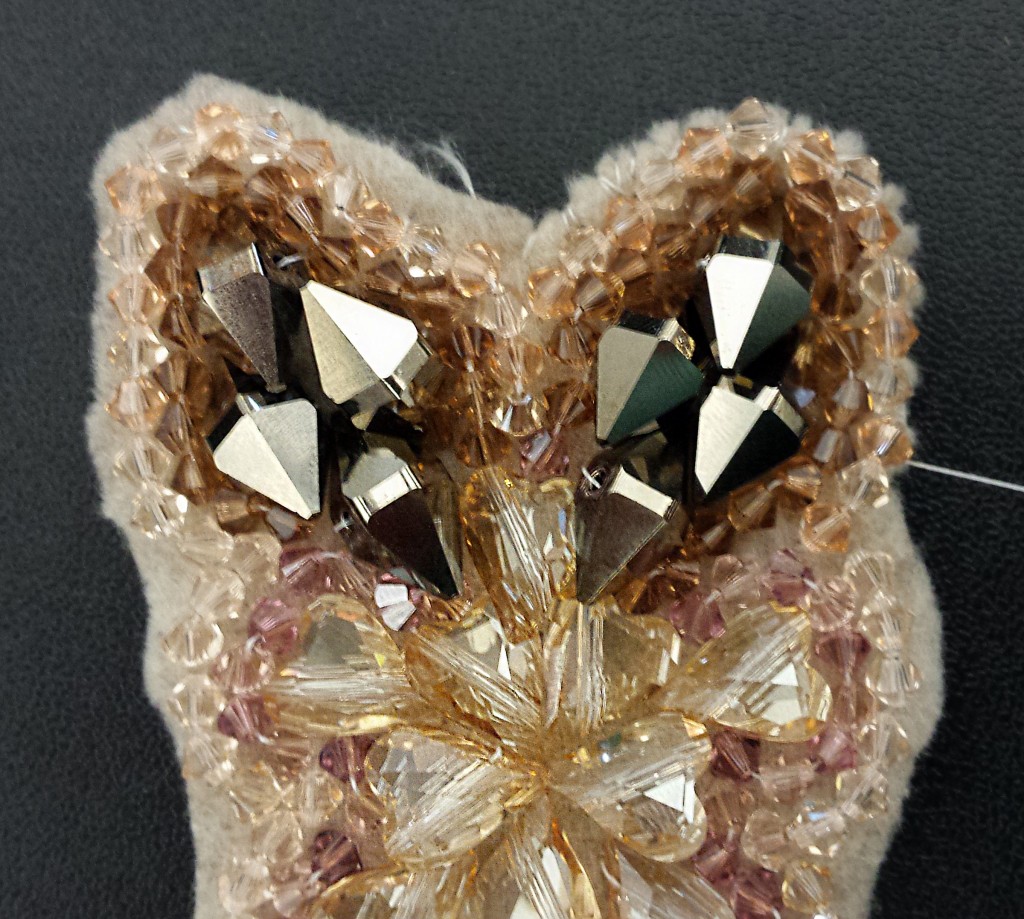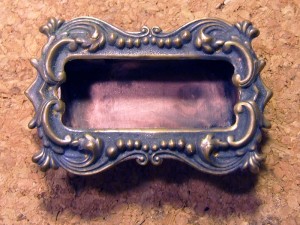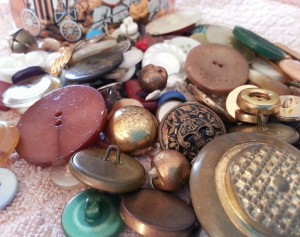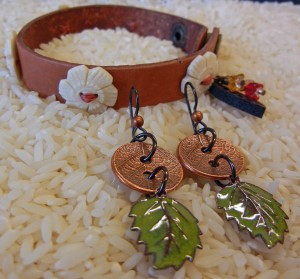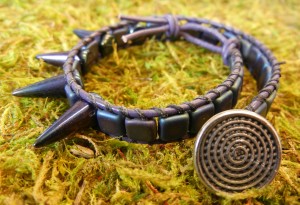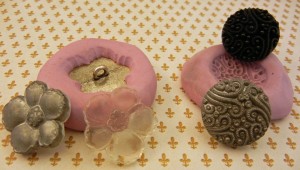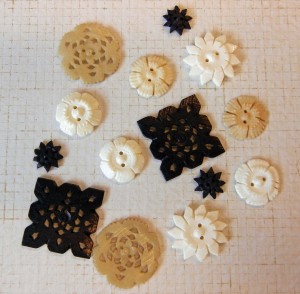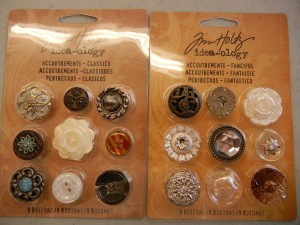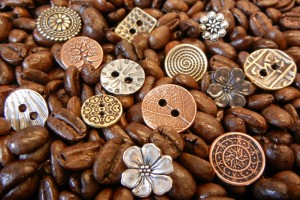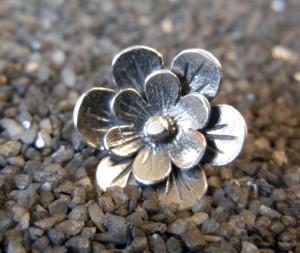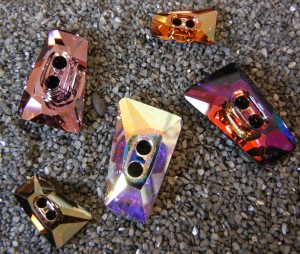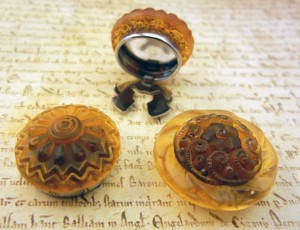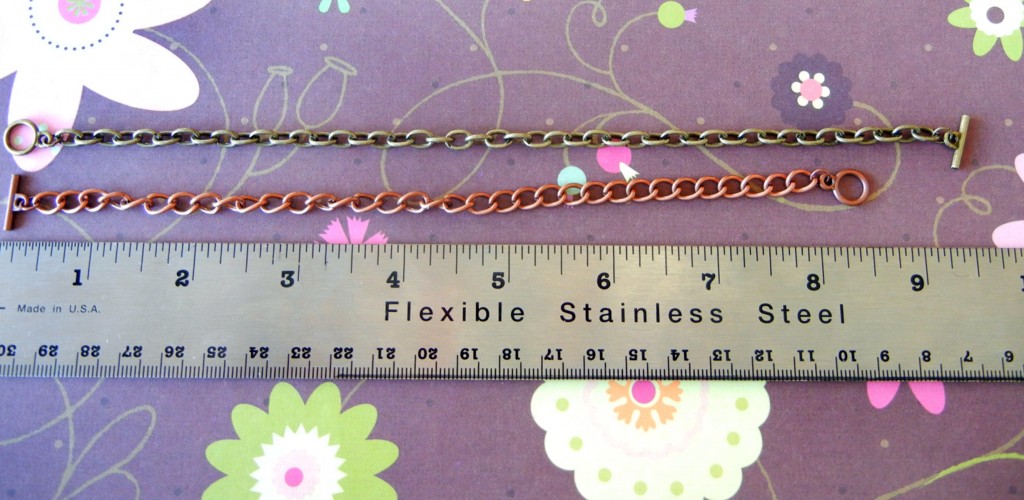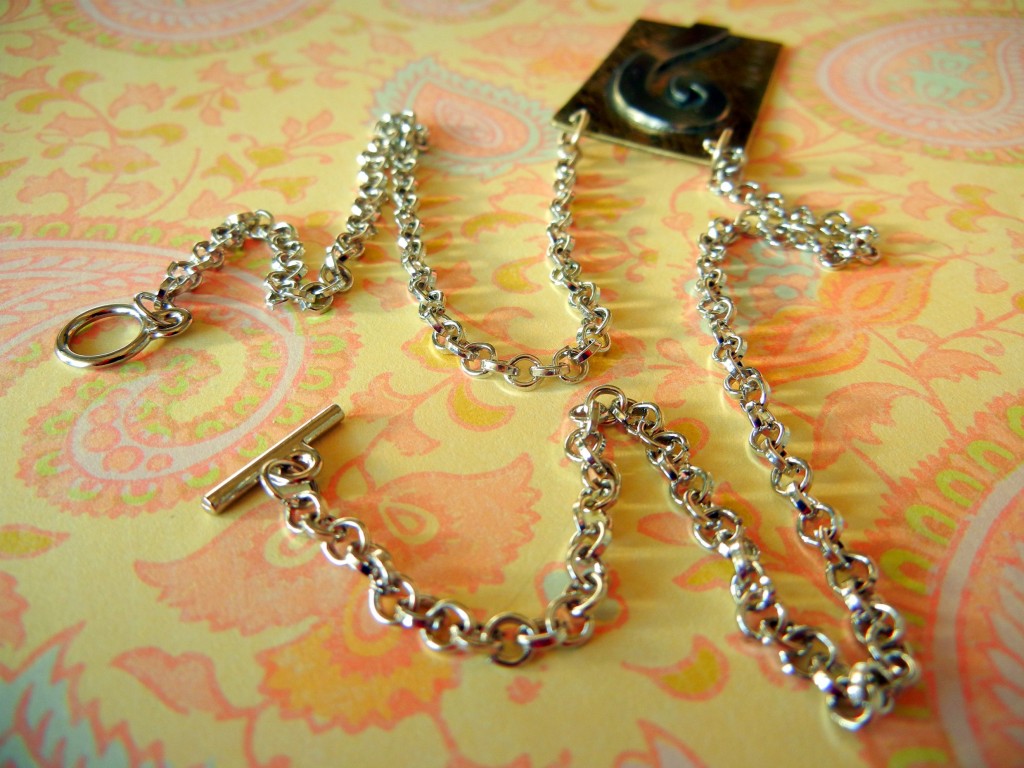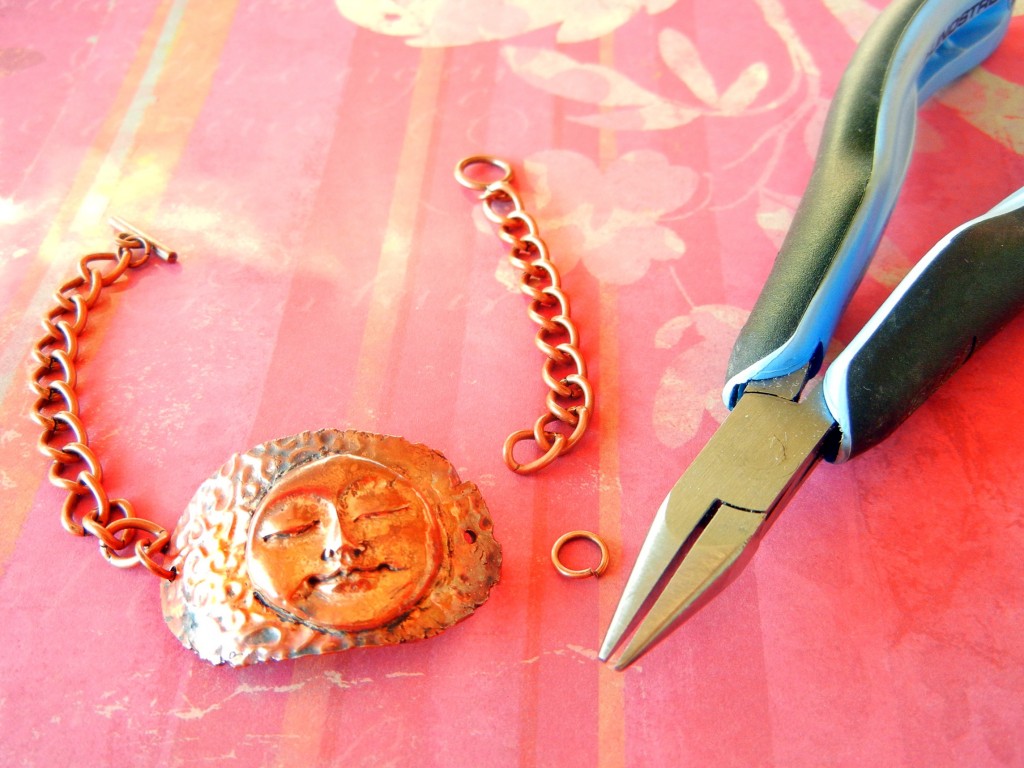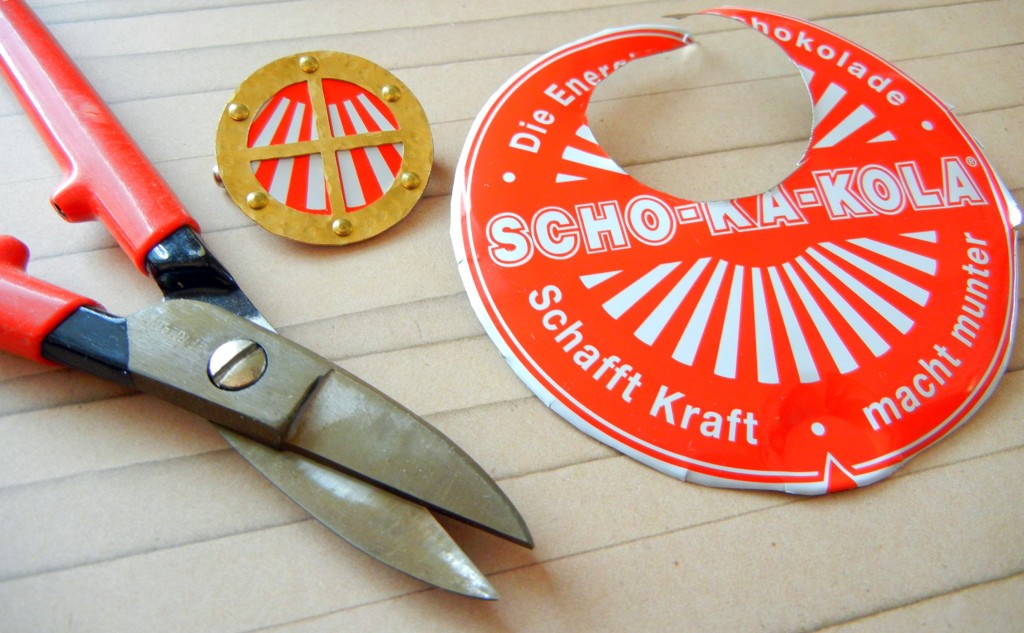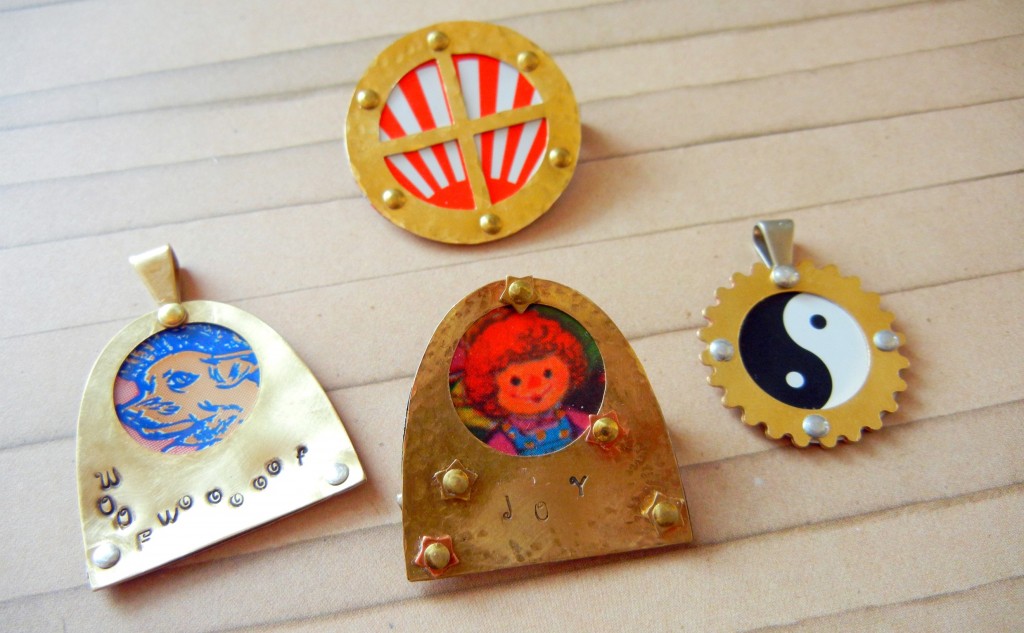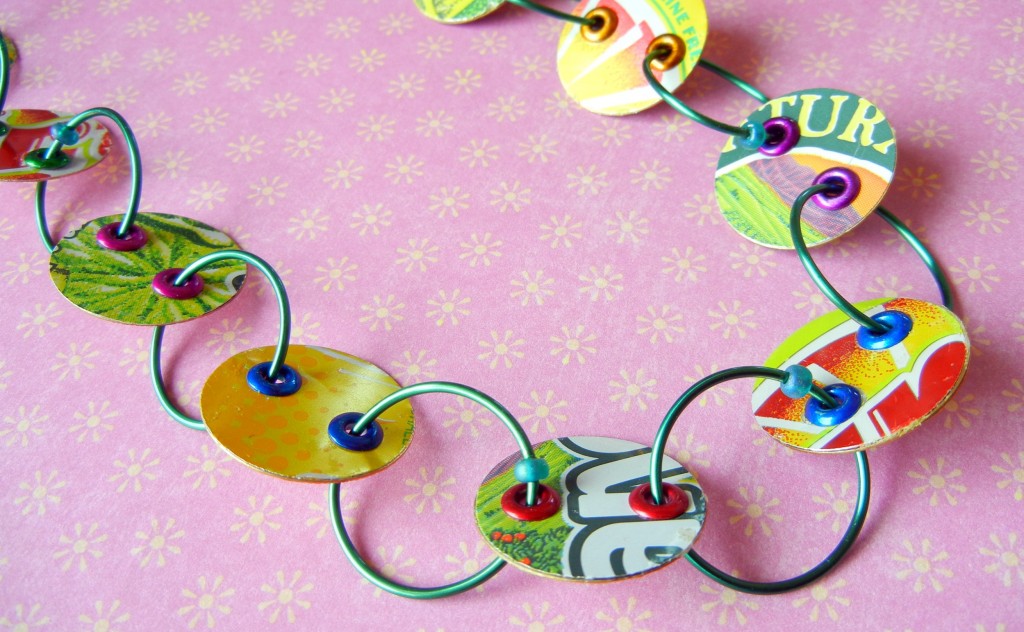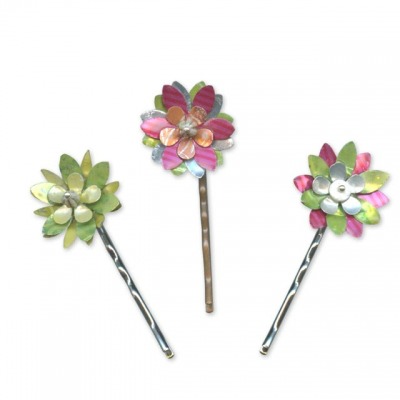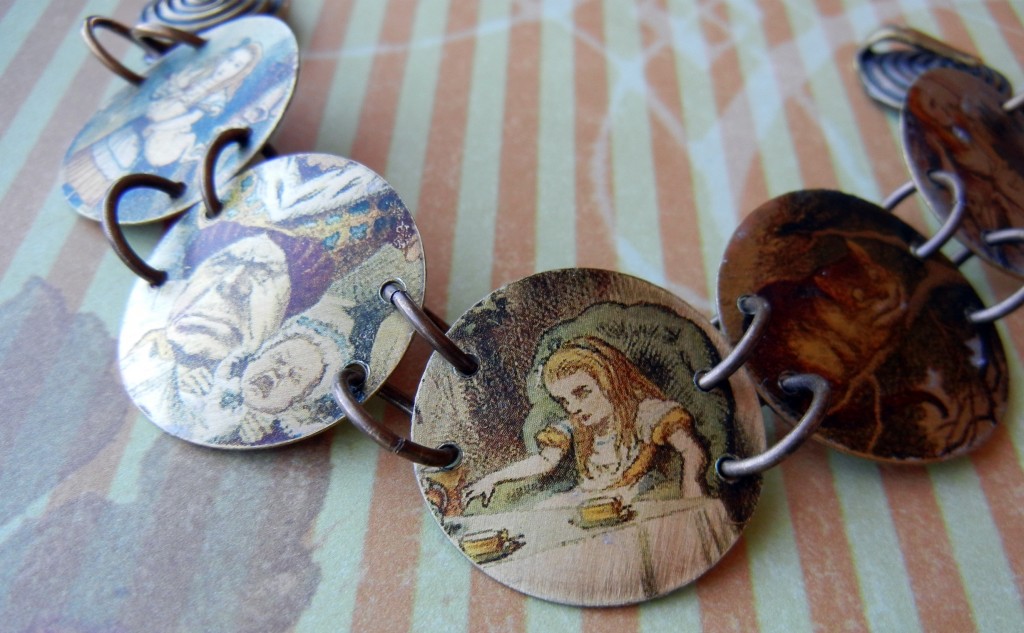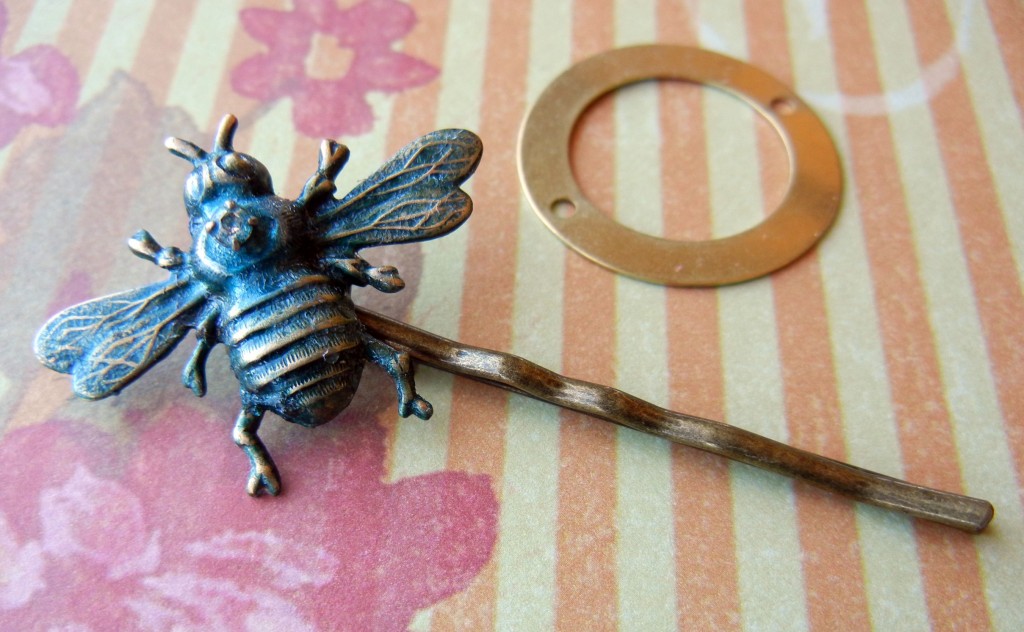I have noticed bullet casing jewelry trending for awhile now. And I love it! It has a rustic, masculine feel. I also love etching metal with ferric chloride acid, something I have been doing for the last couple of years. Etching bullet casings seemed like the next logical step. I thought they would be a great gift for Dad (or Mom, depending on how you make them)! So round up your bullet casings and let me show you how to make these awesome necklaces! —
Charm Necklaces with Interchangeable Lobster Clasp Charms
April 21, 2015Making your own necklaces from bulk chain, jump rings, and lobster clasps can be a great way to save money when you want to make multiples of the same or similar items. My favorite style of bulk footage chain for this is our 2.2mm cable chain. It is fairly inexpensive, hangs nicely, and is great for adding charms to. And recently I have noticed a trend where charms are placed on lobster clasps, making them interchangeable! You can mix and match different charms and other adornments.
Continue Reading…
DIY Swarovski Applique
December 9, 2014Did anyone else notice that winter hit overnight? The below-freezing temps are here and it’s time to snuggle up in our warm winter-wear! While I hate being cold, I love wearing coats and all of the fun accessories that go along with them – so I obviously need to be cute while doing it! I’ve also found a passion for the ‘DIY’ trend that seems to be everywhere these days, and I have created a basic tutorial for applique work using Swarovski crystals and an old headband I found in my closet!

Supplies
1 – John James Beading Needle, Size 10
1 – The Beadsmith Braided Bead Thread, .006in, 28yd spool (I used White)
288pcs (2 gr) – Swarovski Crystal Jams, 4mm (I used Bohemian Rhapsody) OR any color Swarovski Crystal Bicones, 4mm
9 – Swarovski Double Spike Beads (I use 12mm Metallic Light Gold 2x)
10 – Swarovski Wild Heart Crystal Beads (I used 12mm Golden Shadow)
2 – felt squares, about the size of your hand
Pair of scissors

Now the Fun Part!
The beauty of this project is that you can use an assortment of crystals! I try and keep a good balance of large and small crystals, with the larger ones being the focal point. My image above shows my color and size assortment. I went for more of a neutral color palette, really playing off of the golds and light pinks. The Rings & Things Exclusive Swarovski Crystal Jams bead mixes are great for something like this, as they can help you develop a strong color story from the beginning.
First, I started by arranging my larger beads in various patterns (2 options I came up with are above). I knew I wanted to do some kind of floral-inspired design. For some people, it may be easier to roughly draw something as well.
Needle & Thread Basics
I began by cutting a strand of Power Pro bead thread that was about the span of my arms; you can start with a smaller strand than this as this may be easier to manage at first. This thread is pretty amazing – I would not recommend using other threads that you may find at the fabric store because the crystals can actually cut through that type of thread! Power Pro by The BeadSmith is much more sturdy, and you would hate to lose your Swarovski crystals because of the wrong thread!
Once the needle is threaded, tie a basic knot; I did three loops to create a thicker knot.
Step by Step
1. Now it’s time to sew the final design onto the felt. I like to start at the center of my design when I’m sewing on the crystals. Since you have the basic design laid out and your needle threaded, start by holding one crystal in place with your thumb and index finger; insert the needle from the BACK SIDE of the felt so that the needle appears near the edge of the crystal where the hole is located (see FRONT SIDE image below). The knot that you made should be on the back side of the fabric.
2. Thread the needle through the hole in the crystal, and insert the needle back into the felt. Make sure to stay near the crystal’s edge where the needle just exited the hole.
3. Continue doing this for the center crystals (ie. my ‘petals’) and expand to any other large crystals you have (ie. my ‘leaves’). Once you have each of these sewn on, leave your thread where it is. No need to knot anything.
4. Go ahead and grab your smaller beads – Here, I’m using the 4mm Swarovski Bicone Crystal Jams. We will begin where your left your thread after completing the larger crystal beads. Place 2 bicone crystals on your needle and push them down the thread. I wanted to arrange my bicones around my larger crystals as an outline. As soon as they fit snug against the felt, insert your needle back into the felt, staying close to the edge of the bicone. Continue your way around, using two bicones at a time
This is a fun time to play with color! My outlines consist of 3 or 4 different colored bicones, and they really play off of each other in different lights!
**If you ever run out of thread, just tie a knot on the backside of the fabric, and start a new needle & thread!**
5. Once I made my way around, I decided to add a second outline with the bicones. It is completely up to you – be creative and try some different things! Once you have finished sewing all of your Swarovski Crystals, insert the needle down through the front side and tie a knot in the back; you can use the same knot technique that was demonstrated earlier!
Creating a Finished Edge
1. Cut the felt around the crystals, leaving 1/4 inch allowance on the outside.
2. Take your second piece of felt and cut an identical piece
3. Time to start with some fresh thread! Tie the same knot as shown above and insert the needle from the backside, to the front side like below. Pull the needle through until the knot is snug underneath.
4. Grab your second piece of felt and place it underneath your original piece. Insert your needle through both pieces of felt, starting with the new piece. See photo below for reference. Pull all the way through; the felt should curl up as you pull the thread as tight as you can.
This second piece of felt hides all of the thread work you have underneath, while also stabilizing and protecting these stitches from wear and tear.
5. Start working your way around the felt, using the same technique in step 4. You can see the difference in the two photos below – I have completed the technique on the upper right hand side.
6. Once you have completed this step, your applique is complete! You can use this for scarves, headbands, gloves, apparel, etc. I have attached this to a headband, and I used the same technique from steps 4 & 5. It’s that simple!
All of us at Rings & Things would love to see any applique work you have created! Please send us pictures or post them below! 🙂
Happy Winter!
– Laura
How To Set Eyelets in Leather
January 29, 2014Eyelets in leather jewelry can be both decorative and functional. Whether you want to add an industrial punk look to a leather bracelet, explore a new way to finish a choker, or find new alternatives to add embellishments, eyelets offer a clean and finished look to jewelry! With Rings & Things new EXCLUSIVE Leather Embellishing Kit, some leather and a little creativity is all you’ll need!
Here are simple step-by-step instructions for setting eyelets in a leather bracelet…
How to Make a Metal Box
October 28, 2013Make A Metal Box
A small metal box was turned into a framed reliquary, containing an antiqued frozen Charlotte doll. Create your own metal box that can be transformed into memory jewelry, a tiny shrine or used for some other whimsical (or practical) purpose.
To make a metal box, first decide on the type of metal, and the size of the box you want to create. I recommend using 20 gauge sheet metal for strength and durability. Copper or brass sheet metal are nice choices as they are inexpensive and they antique nicely.
Anneal the metal before cutting so that it can be manipulated more easily. Heat it with a torch until it is glowing red, let it cool naturally and clean thoroughly.
Cut the metal to size. This box was 1-1/2″ long and 3/4″ wide. It is 3/8″ deep. Draw lines of box using a Sharpie pen.
Cut one line of each corner to the point where it intersects with another line. Using wide flat nose pliers, bend the ends in, and the sides up, to create the box shape. Carefully fold each end of the box into place, making the corners square and secure. File if needed to remove any uneven edges.
Antique and colorize all parts you intend to assemble.
Fill back of frame with two-part epoxy. Center box over ornate brass frame and press into epoxy to place.
Using a two-part epoxy, UV resin, jeweler’s grade resin or other strong, clear glue, embed your treasures into your framed metal reliquary. Small toys, souvenirs, images layered in resin and tiny mementos are all used in creating custom memory jewelry.
Use epoxy to attach a magnet, let it cure and you are done! (Note: You could also attach a pin back or changeable bail in the same manner for a DIY jewelry brooch or pendant).
Questions? Please post them below!
Button, Button, What to do with buttons?
June 18, 2013I love a good button. I think most bead hoarders have a button tin somewhere as well. The materials used for buttons range from the simple and inexpensive to exotic and pricey. Obviously buttons have a practical use in sewing and clothing design, but they can be great additions to DIY jewelry as well.
Buttons as beads:
By their nature, buttons tend to have either a shank, with an opening for thread, or 2-4 holes for sewing. These holes and openings mean your buttons can substitute for beads and work as connectors in jewelry design. See round TierraCast buttons with a leaf pattern in New Leaf Earrings and bone buttons sewn on the Boston Bracelet.
Buttons as clasps:
Whether for popular wrapped lashed leather bracelets, or for necklace designs, adding a button to one end of your design and creating a simple loop or series of loops at the other end will complete your creation. The Dark and Dangerous Bracelet uses a cast pewter Spiral Button for the closure.
Buttons as Cabochons or Cameos:
Disk & Loop Bracelets make up into quick finished jewelry by gluing buttons to the disks. If the button has a shank, you may need to trim it and file the surface, then add your favorite adhesive, and you have quickly created a new accessory. Cute as a Button Bracelet uses an assortment of plastic “accoutrements” by Tim Holtz for decoration.
Copies of Buttons:
Have a one-of-a-kind or vintage button that you love, but don’t want to part with? 2-part silicone molding material works great to make a mold of your treasure that you can re-create in polymer or resin and use time after time. Silicone molds were quickly made of the buttons in this picture. Reproductions of the buttons (without the pesky shanks) were easily made with Amazing Resin and SuperClear Resin. For more information on making molds, see our previous blog: Making Your Own Molds is a Hoot.
Buttons you can buy from Rings & Things:
Rings & Things carries buttons in materials such as bone,
and SWAROVSKI ELEMENTS crystal
Making a Button:
Do you have an item without holes that you want to use as a button? Easily glue a plastic button shank to your piece to create a button. These work great for turning resin, polymer clay, hand-made glass, and ceramics into useable buttons. Since these shanks are plastic, they don’t have the sharp edges that you sometimes find on metal shank findings. The set shown above are made from resin flowers, colorized with gilders paste, and attached with E-6000.
Changeable buttons:
With a button cover and some glue, you can create a decorative cover that can be transferred from garment to garment, covering the plain or boring buttons used in manufacturing. This set is made with super clear resin, colored with dye and glitter, and attached with E-6000.
Our pinterest board “Buttons” has further inspirations for using buttons and great handmade buttons.
~ Rita
How to use charm bracelets to make necklaces!
February 20, 2012Hola, bloglandia! Today I wanted to share a quick and easy way to make necklaces using charm bracelets. Rings & Things has a great selection of ready-made chain bracelets with toggle clasps. The typical use is to leave the bracelet in one piece and add charms with jump rings for a charm bracelet. However, these bracelets are a bit longer than advertised.
It is always better to have too much chain vs. not enough, so think of those extra links as a bonus you can use to make coordinating earrings. Or, do as I did and use two bracelets to make a necklace! Instead of removing extra links, you can also take advantage of the longer length by removing the bar from one and the loop from another to create a necklace!
Here’s another example:
These extra long bracelets also make great anklets. And yes, they still make great bracelets! Here are two examples:

You might have noticed that all the focals for these pieces are handmade. Browse our resin and bezels, metal-working tools and metal clay selection to get busy making your own!
Twelve Days of Christmas Jewelry Designs: 10 – Velvet Bookmarks
December 5, 2011 Yes, it is just my opinion, but I’ll say it as though it is a fact: books always make great gifts. I love giving books. I love receiving books. And it is easy to make pretty ribbon bookmarks to personalize your gifts even more!
Yes, it is just my opinion, but I’ll say it as though it is a fact: books always make great gifts. I love giving books. I love receiving books. And it is easy to make pretty ribbon bookmarks to personalize your gifts even more!
 Start with a length of beautiful
Start with a length of beautiful
velvet ribbon.
 Use choker clamps to attach beads and baubles to the ends.
Use choker clamps to attach beads and baubles to the ends.
 Amy’s bookmarks are in our design gallery, where you’ll also find a list of the exact supplies she used to make them.
Amy’s bookmarks are in our design gallery, where you’ll also find a list of the exact supplies she used to make them.
Sure, Kindles and other e-readers are gaining popularity, but nothing really compares to curling up with an actual paper book and a big mug of your favorite beverage. Make the moment even more indulgent with a luxurious bookmark! Need a jewelry-making book to gift (to a friend or maybe yourself)? Here are three recommendations:
Jewelry Lab by Melissa Manley
Wire Style 2 by Denise Peck (includes DVD)
The Encyclopedia of Contemporary Jewelry Making Techniques by Vanetta Seecharran.
Happy reading! ~ Cindy
Upcycle cans and tins into jewelry!
October 7, 2011We all know recycling is a good thing, but upcycling is even better! Aluminum and tin cans can easily be turned into jewelry, but there are a couple of things to keep in mind:
- Metal edges can be wicked sharp. Make clean cuts and file off any jagged points. Quality jewelry metal shears make this much easier! Most tin snips and other shears from hardware stores are difficult to grip.
- Aluminum cans and most tins are too thin to be durable enough for jewelry by themselves. We suggest layering the metal you cut from recycled items. Three ways of doing this are riveting, gluing and/or coating the metal pieces.
Here are a few examples of how to turn packaging into lovely adornments:
Polly sandwiched her recycled metal elements between brass fairy doors, disks and gears. She riveted the pieces together using Crafted Findings’ riveting tool. Learn more about the riveting tool system here.
For this Soda Pop necklace, we cut disks out of cans and then glued them to brass disks to make them thicker. A circle template (commonly found in Art Supply stores and sometimes Craft Store) makes this task easier. Get more info in our design gallery.
Instructions for how Toni coated these pins with liquid polymer clay to make them safe to wear are in our design gallery.
Start looking at soda cans and other product packaging in a different way! I for one always check the bottle cap design when deciding on a beverage.
How I wish every city had an Upcycle Exchange Market (yikes! Link removed in 2019 … that link goes to something COMPLETELY different and unsavory now). It is a brilliant idea for reusing and redistributing crafty supplies and recyclables! Until then, ask your friends and family to help collect interesting materials for you. You might just upcycle something wonderful!
Two ways to color metal using Image Transfer Solution
April 22, 2011Hi Bloglandia! Last weekend I did a demo in our Spokane showroom on how to use Sherri Haab’s Image Transfer Solution (ITS) and thought now would be a good time to share these techniques for colorizing metal with everyone.
Image transfer is just that – transferring an image from the paper it is printed on to a different surface (in this case, metal jewelry components). Image transfers have a vintage, ethereal feel, and I love how the different colors of metals shine through. Unlike many of the other solvents and processes used for image transfer, Image Transfer Solution (ITS) is non-toxic. Yay! Plus, it has another purpose not even mentioned on the bottle: it is an excellent way to seal colors onto metal (more on that in a bit).
Transferring Images – ITS Method #1
One caveat: The images you use must be printed on a laser (toner based) printer. Ink jet pictures will not work. The pictures can be black or white or color. Photos and text should be reversed before you print, since transfers will be mirror images.
To be honest, I did not like ITS the first couple of times I tried it. I kinda hated it. Following the directions on the bottle, I prepped my metal with steel wool and heat-set the images in a 325 degree oven – just like it said! – but things just kept going wrong. Either my images would wash right off the metal or the paper would be so very stuck to the metal that no amount of scrubbing would remove it. But I loved the concept, so I kept playing with it. Below is my own method for using ITS. Maybe the package directions will work like a charm for you. If not, I hope my tips and tricks help:
- Scuff up your metal (aluminum, brass, copper and silver all work great) with a medium grit sanding pad or sand paper. Steel wool leaves the surface too smooth, in my opinion.
- Wash metal with rubbing alcohol to remove dirt, dust and oil – even if it looks clean!
- Using a clean, dry paintbrush, evenly coat the prepped metal with just a couple of drops of ITS.
- Press image face-down onto metal and press firmly into place to remove any air bubbles. ITS is like glue – you will not be able to reposition your paper at all, so be careful to place it where you want it! Let dry. Use an iron (high heat, no steam) to heat the metal for 1 or 2 minutes. Don’t worry, the paper won’t burn. Let metal cool.
- Place the metal into water and using a gentle circular motion, begin rubbing the paper off, leaving the image behind. Don’t get to aggressive or you could lift off parts of the image. Patience pays off here.
- After most of the paper is removed, use a sheet of polishing paper and more water to remove the finer paper fibers.
- After all of the paper is removed, seal the image with a dab of Renaissance Wax and a soft cloth. It really improves the luster.
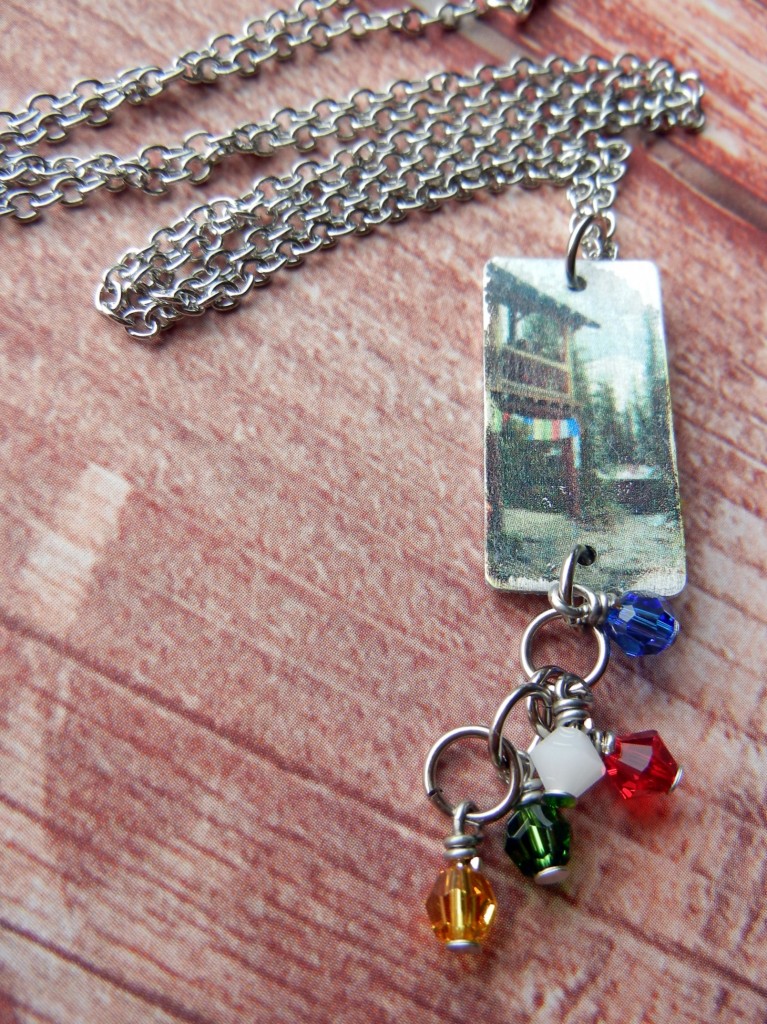
My photograph looks like a vintage postcard after being transferred onto aluminum. The Swarovski beads are the same colors as the prayer flags hanging on the mountain tea house.
Complete your jewelry piece! The image is permanently attached. You can even punch holes or dap the metal and it won’t come off!
Sealing Colors – ITS Method #2
Image Transfer Solution can also be used to permanently seal inks onto metal! Ranger Adirondack Alcohol Inks are tons of fun to mix and blend onto non-porous surfaces, like metal, but since they are ink, they can be rubbed or washed off. That is, unless you seal them with ITS. When you heat-set ITS, it binds the color to the metal. It will not wash off or bleed onto your customer’s skin.

Vintaj fussy peacock pendant colorized with alcohol inks for a faux enamel look.
You can color your metal with alcohol inks and then, after they’ve dried, paint a thin layer of ITS over the top. Another option is to mix the ITS directly with your inks (just a few drops of each) and paint that mix onto your metal. Either way, once the ITS has dried, you need to heat-set it to make the bond permanent. Just follow the directions on the Image Transfer Solution package for using an oven to heat-set (the iron won’t work for this application).
There you have it! Two tried and true methods for permanently coloring your metal pieces for jewelry and other applications. Although this post focused on metal, Image Transfer Solution can be used on polymer clay, etched glass and other surfaces too! Since it really only takes a couple of drops per image, you’ll have plenty to experiment with! ~ Cindy
PS: here are some handy links to some other how-to‘s in the Rings & Things blog!
- How to dap & dome metal jewelry
- How to use heat to patina brass charms & filigrees
- How to make interchangeable magnetic jewelry with 1″ buttons
- How to make polymer-clay pie earrings using mini bottle caps as pans
- How to get creative with hair sticks
- How to make wrapped leather bracelets
- How to get creative with hair sticks

